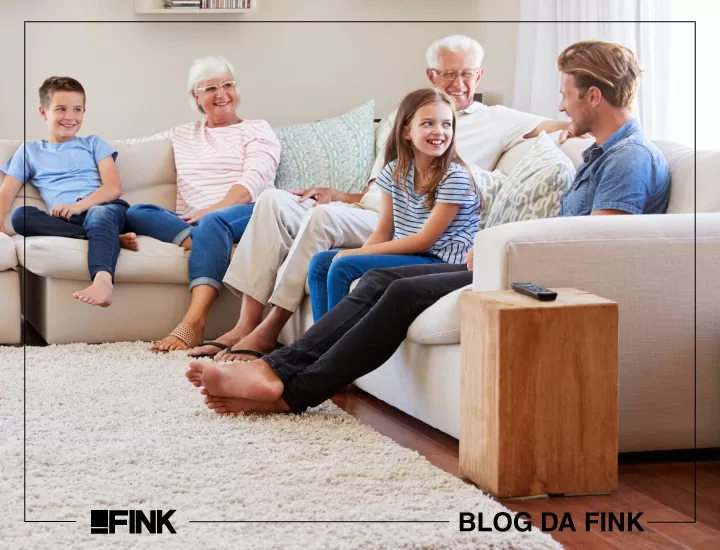
Elderly people and children have special needs in a residence. Just as we prepare our home for the arrival of a baby, we should also do the same on the arrival of someone of advanced age. Whereas the presence of children requires protection, such as shielded wall sockets and protective screens on windows, for the elderly the care is focused on protecting them from falls, and increasing their accessibility to every part of the house or apartment. This is because the highest rate of accidents involving the elderly occurs mainly inside the house, where the ambience is most trusted.
Especially when this trust is due to familiarity with the place, and not necessarily due to the safety that the house offers to the elderly. With this in mind, we have listed, room by room, safety items needed for receiving an elderly member of the family. The aim is to avoid falls and to increase their power of moving throughout the house, either by removing obstacles or by improving the lighting of the room. Light is essential for safety, since visibility is directly connected to stability. To this end, we recommend investing in brighter lamps for the house.
It’s advisable to have at least one telephone in the living room and another in the oldster’s bedroom, to be used in an emergency. Have sturdy furniture that can be a support for the oldsters as they move around the house. For the living room, for instance, it’s worthwhile investing in a sofa and an armchair high enough for oldsters to keep their feet on the ground when they sit down, together with firm seats to help support them when they get up or sit down. Therefore, get chairs, armchairs and sofas with sturdy arms. Set the furniture against the walls or attached to the floor, to prevent oldsters from bringing them down when leaning on them for support.
In the kitchen, use stable counters and sink, always keeping in mind that everything serves as a support for someone who has some kind of locomotive difficulty, or suffers from labyrinthitis. If there is enough room, have a table or counter with space for an armchair, so the oldster can handle food while seated.
Don’t keep anything essential at an inaccessible height (closets and drawers should have a height between 50cm and 1m50), that is, don’t keep things in places that are either too low or too high, where a ladder is needed for access. Ladders should be totally forbidden for the elderly, to avoid the risk of falling. If possible, avoid stairs of any type, even when this means – if possible – moving house. As a last resort, have very sturdy handrails on both sides of the stairs, with well-preserved flooring and bright lights.
The same goes for corridors with different levels: brightly lit and with handrails on both sides. For the oldster’s bedroom, the same rule for sofas and armchairs: while sitting, the feet must touch the ground, which provides firmness for getting up or sitting down. Place the bed near solid furniture or near the wall, so they can be used for support. An important tip is not to change the positions of the furniture, so the oldster will have familiarity.
We’ve left for last the place that requires the most attention: the bathroom. Most accidents, such as falls, happen there. Since the ambience is damp, it leads to slipping. It’s important to use non-slip flooring and rugs, both in the bathroom and in the shower stall. Place support bars in the shower, if needed, as well as next to the toilet, to help in sitting down and getting up. The toilet, actually, should be higher than usual, making it easier to use. Doors that can be opened from outside, with lever-shaped doorknobs, and without locks are ideal, to facilitate any type of help.
Taking essential steps for the safety and accessibility of the elderly, as described above, requires dedication and even investments. However, the reward is immediate: quality of life plus independence and self-esteem for the elderly, while other members of the household gain peace of mind with regard to the health of those of advanced age.











